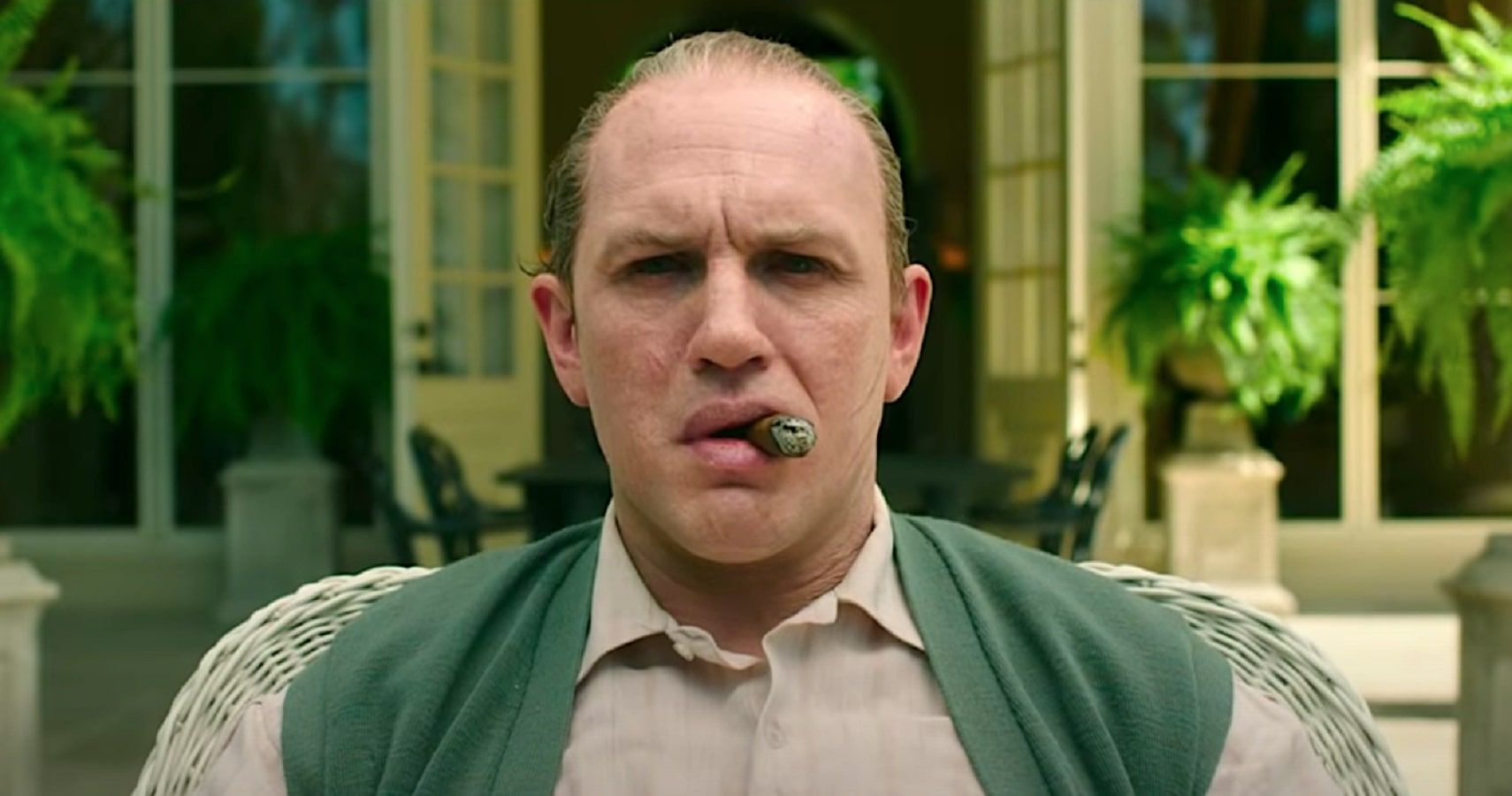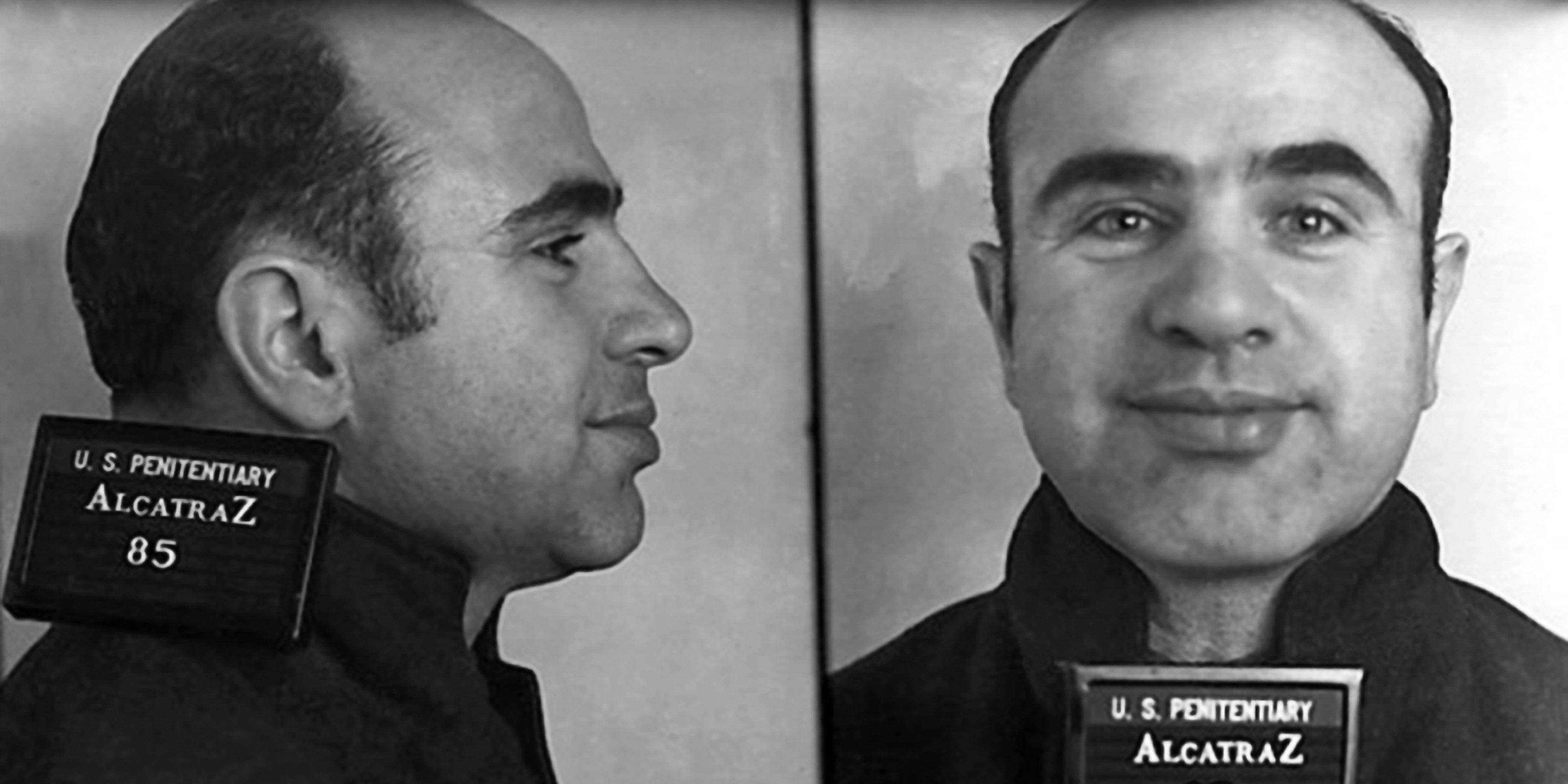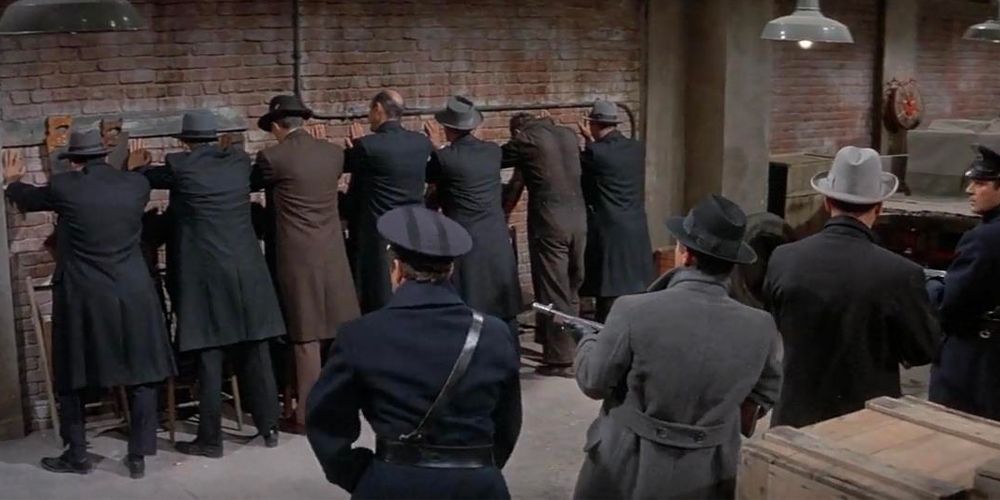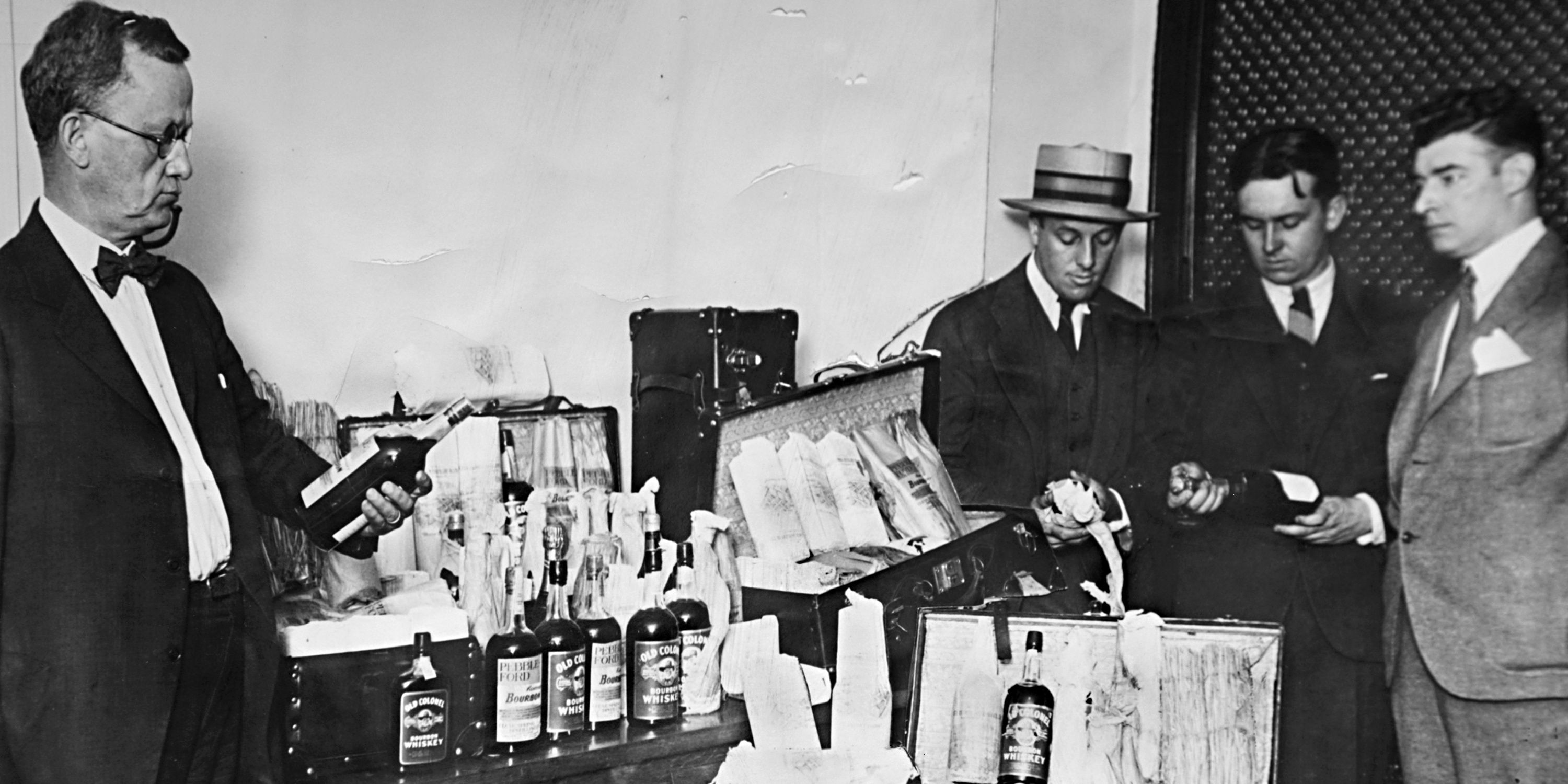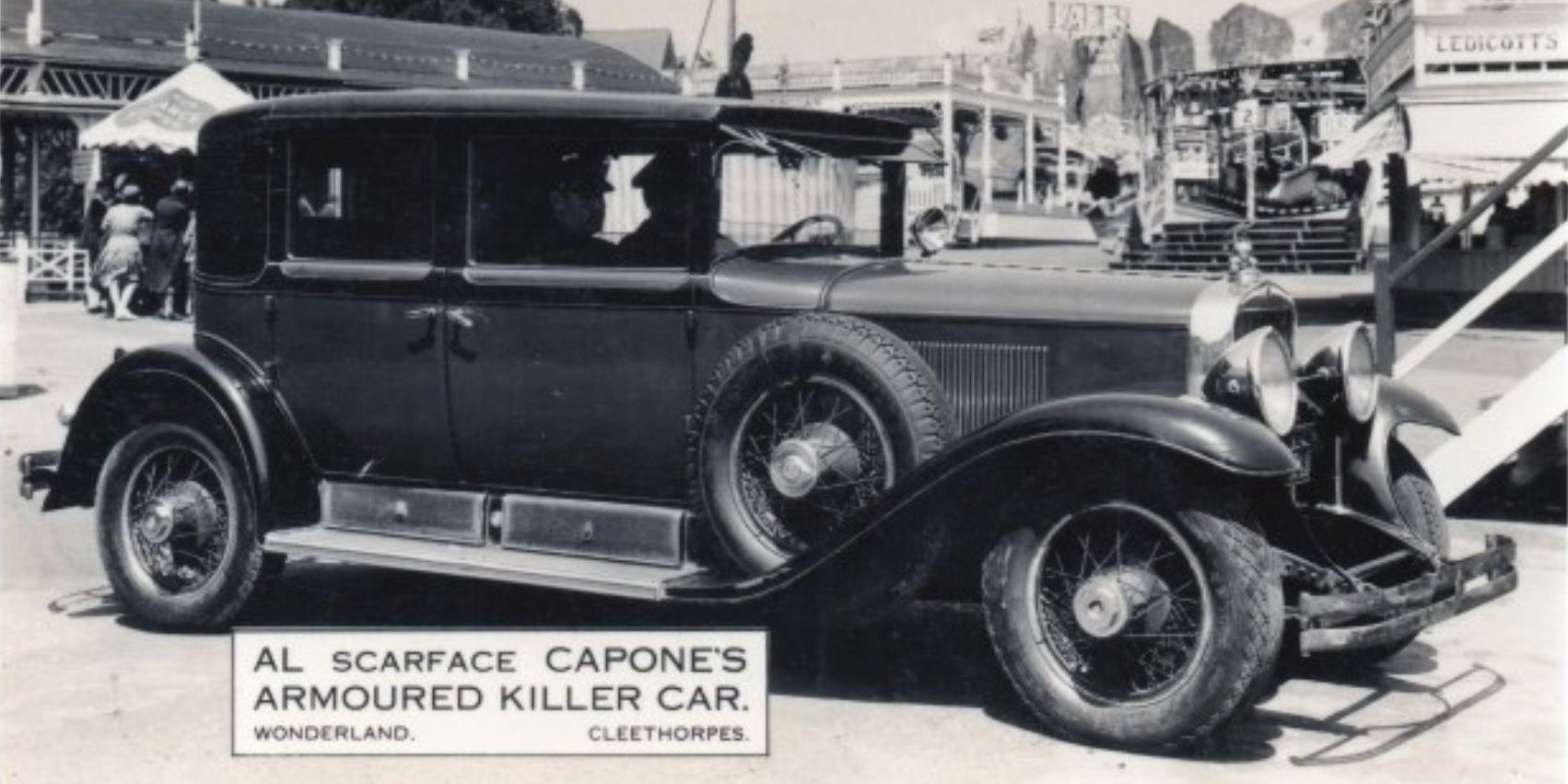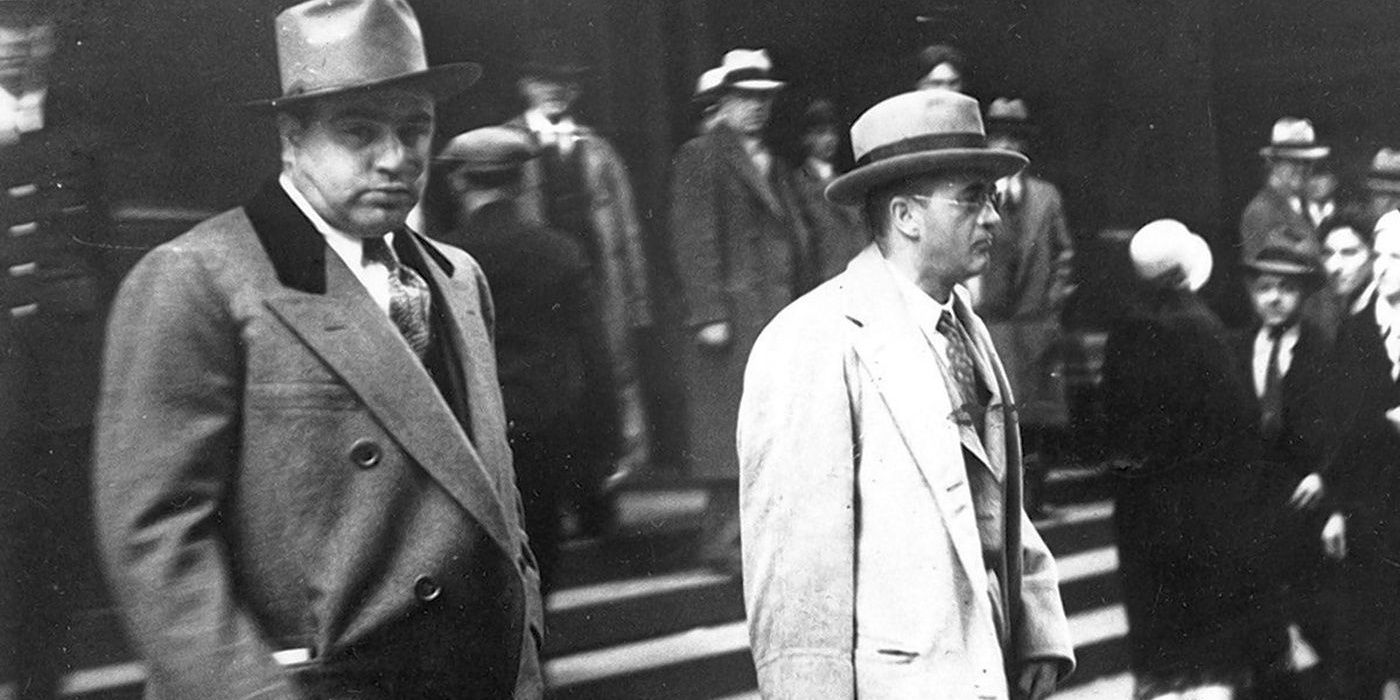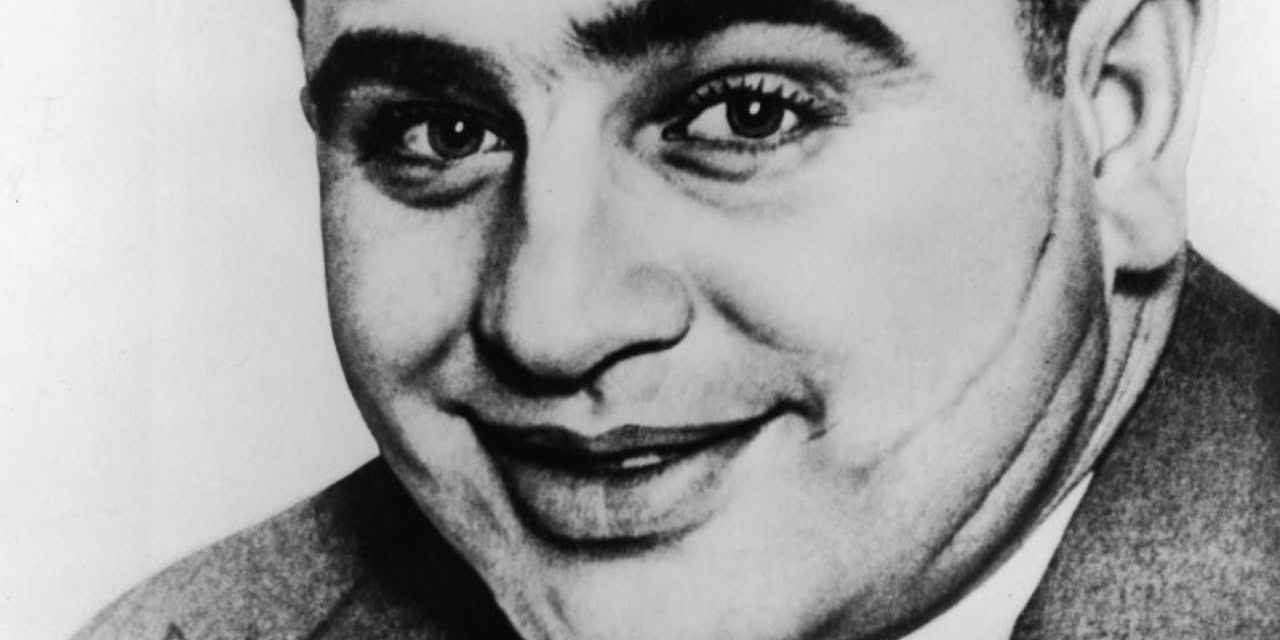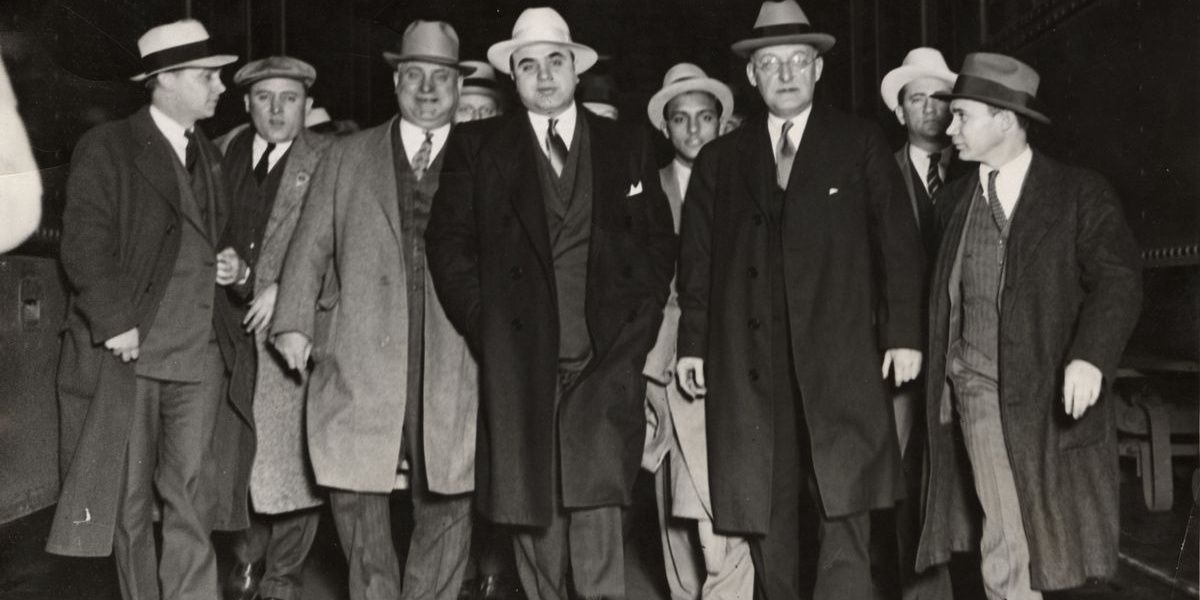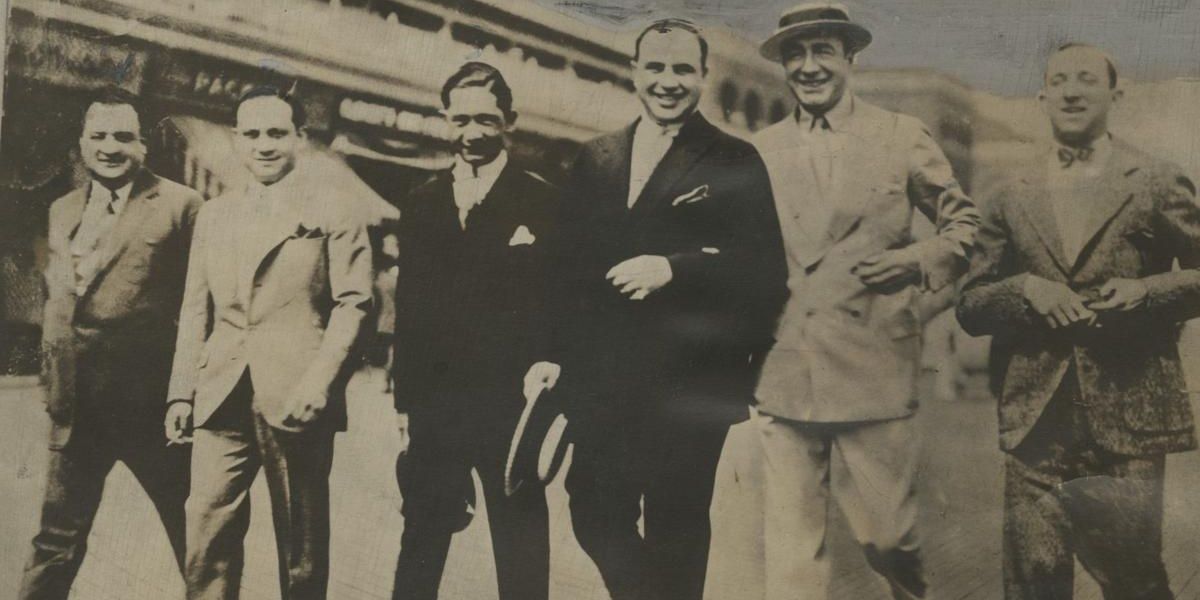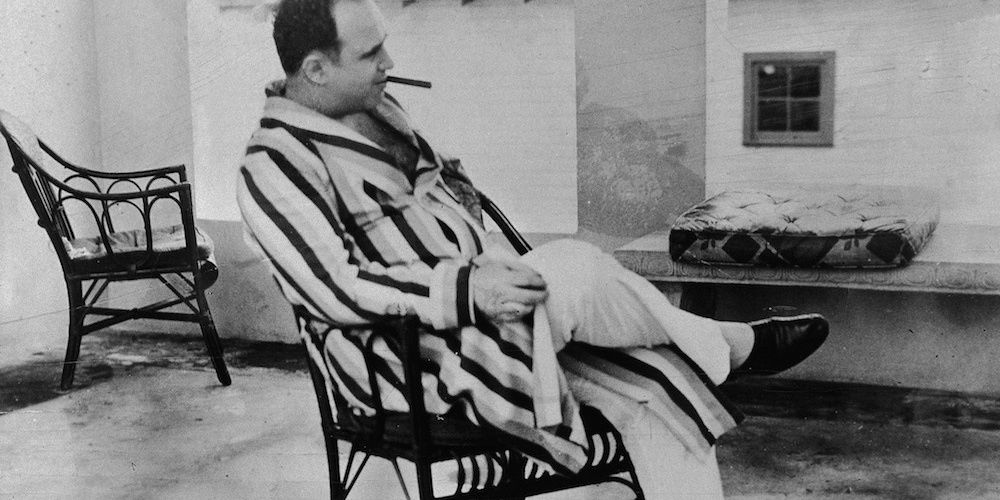The trailer for Capone (formerly titled Fonzo) dropped a few days ago, and it looks like it's going to be a fascinating film for history buffs. Capone stars Tom Hardy as America's most notorious gangster Alphonse "Al" Capone. The film will see an ailing and aging Capone recollect the key events in his life courtesy of flashbacks, kind of like Frank Sheeran in The Irishman.
Real-life mob bosses are often harder to portray on the screen, but with Tom Hardy as the lead, the film stands a good chance of succeeding with fans and critics. The film is directed by Josh Trank who is best known for the science-fiction film Chronicle. Here are historical events surrounding Capone's life that the movie ought to address.
Capone's Prison Stint At Alcatraz
In the same manner that South American drug lords fear getting extradited to the US, all gangsters feared getting sent to Alcatraz back in the day. Unfortunately, Capone ended up at the facility after the government nabbed him for tax evasion. Capone was specifically sent there because he was notorious for manipulating the system.
There were fears that in any other prison, he would have found a way to get out. But in Alcatraz, it was fair game for all. The gangster is said to have had constant clashes with wardens and fellow prisons. Years later, he was assigned to another prison due to his declining health before finally being released.
The St. Valentine's Day Massacre
In early 1929, the gang war in Chicago was getting out of hand. Al Capone was constantly clashing with Irish gangster George “Bugs” Moran. On the 14th of February, men dressed as police officers stormed a garage that Moran ran his bootlegging empire from, lined up seven of his men, and sprayed them with bullets.
It was established that about 70 rounds of ammunition were fired. When the real police arrived, they found one of the men still alive, but he refused to talk. He died a few minutes later. As expected, Moran blamed Capone, but Capone denied any involvement. The case has never been solved to date. The image above is from the 1967 film The Saint Valentine's Day Massacre because the images of the aftermath of the shooting are too graphic to share here.
Cat And Mouse Games With Eliot Ness
The award-winning film The Untouchables already covered much of Eliot's story. Still, it would be great if the upcoming movie also touched on the agent's activities since he was a huge part of Capone's life. Eliot Ness is often credited as the man who managed to take down Capone.
Ness was a federal agent who spearheaded a highly publicized investigation of the Chicago gangster. He closed many of Capone's breweries, thus crippling his empire. Ness is also said to have refused a multi-million bribe from one of Capone's men. Even though Capone covered up his violent crimes well and escaped the agent's traps on many occasions, Ness finally had him arrested and charged for income tax evasion.
The Day Roosevelt Used Capone's Armored Car
There has always been a long-standing rumor that President Roosevelt rode in Capone's armored car on his way to address the nation after the attacks on Pearl Habor. There is no evidence to prove it, but a 'fact' like this is great for a movie. Anyway, here is exactly what the rumor mills said at the time.
Hours after the Pearl Harbor attack, President Franklin D Roosevelt was scheduled to go to Capitol Hill to address Congress. The secret service agents were concerned about his safety since his car wasn't bulletproof. One quick-thinking agent suggested that they use Capone's armored car, which had been impounded after his arrest. Capone’s 1928 Cadillac 341A Town Sedan had been custom made with 3,000 pounds of armor and bulletproof windows. It also had sirens for whenever the gangster needed to pretend he was the police.
Capone's Expulsion From School
Al Capone is said to have been a bright student at first before he suddenly became unruly. When he was 14, his infamous temper got the better of him. When a teacher tried to cane him, he punched her. He was expelled and never stepped into a classroom again. It was around this time that his parents moved to a new neighborhood (21 Garfield Place).
There, Capone was properly introduced to crime. He joined two gangs, namely the Brooklyn Rippers and the Forty Thieves Juniors. Members of the gangs included men like Johnny Torrio and Lucky Luciano, who would go on to be major crime bosses in the future too.
How Capone Became "Scarface"
During the height of his powers, Capone was nicknamed "Scarface" by the media due to the three scars on his face. But how did he get the scars? Back in 1917, a young Al Capone was working at a bar owned by mob boss Frankie Yale. One evening, a New York gangster named Frank Galluccio showed up with his sister.
Al Capone tried to woo her, but Frank didn't like this so he demanded an apology. Capone refused to apologize, and thus the two men got into an altercation. It is during this altercation that Frank took a knife out of his pocket and slashed Capone's face three times. The scars remained forever.
How Capone Ended Up In Chicago
The mobster grew to be the biggest mobster in Chicago, but it wasn't really his hometown. So, how did he end up there? Capone and his wife Mae lived in Brooklyn for a while as he was working for mob boss Frankie Yale. Apparently, Yale had to send Capone out of New York after he got into a fight with members of a rival crime family.
This way, he had somehow saved Capone from retaliation. So, Capone ended up in Chicago, where he made plenty of connections and began working for Torrio, who had taken over after the murder of Big Jim Colosimo. After an attempt was made on Torrio's life, he retired, leaving Capone in charge.
The Atlantic City Conference
The Atlantic City Conference occurred between the 13th to 16th of May in 1929. It was organized by Al Capone and the ever-smart Atlantic City crime boss Nucky Johnson. Mobsters from different regions of America were invited to the conference.
Some of the topics discussed included how to end the increasingly violent gang wars in New York City and Chicago and new ways to make money given that there were rumors of Prohibition coming to an end. After the conference, Capone assured the press that there would be no more violence. However, the peace only lasted two months.
Murder At The Dinner Table
This moment was already recreated quite magnificently by Robert De Niro in the Eliot Ness film. However, it would be great to see it again. What exactly happened? Capone once invited his close associates to dinner, including two Sicilian friends whom he suspected, had betrayed him.
As everyone was enjoying the sumptuous banquet, Capone stood up, grabbed a baseball bat, and proceeded to beat the two traitors to death with it. All the other guests left with drops of blood on their coats. The message was clear: don't mess with Scarface.
The Assassination Attempt
Most people knew not to mess with Capone, but some tried. On September 20, 1926, Capone's rival Moran had his gang try to kill him as he was having lunch at the Hawthorne Hotel. The men who were carrying Thompson sub-machine guns fired hundreds of bullets at the hotel. Capone's bodyguard saved him by throwing him to the floor and lying on top of him.
Several innocent bystanders were hurt during the incident, and Capone offered to even foot the medical bills of a small boy who had severe injuries. The incident is what prompted Capone to get an armored car. He also had an army of thugs guarding all his businesses and homes. Three years later, the famous mobster would get some form of revenge over Moran courtesy of the St. Valentine's massacre.

